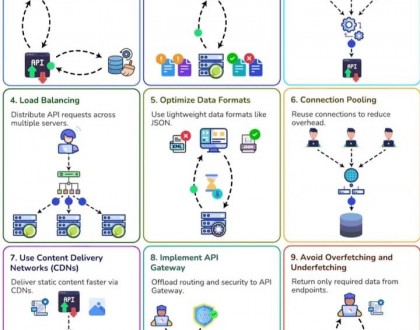SOAP vs REST APIs: A Comparative Analysis
Introduction
In the realm of Application Programming Interfaces (APIs), the discussion often revolves around two prominent architectural styles: SOAP (Simple Object Access Protocol) and REST (Representational State Transfer). Both SOAP and REST APIs are fundamental in enabling communication between software applications, but they diverge significantly in their approach and functionality.

Understanding SOAP
What is SOAP?
SOAP, an XML-based messaging protocol, is designed for exchanging structured information in the decentralized and distributed environment of the internet. It relies on XML for message format and typically operates over HTTP, SMTP, or TCP/IP.
SOAP Features
SOAP is characterized by its formal structure, extensive security features, and reliance on standards like WSDL (Web Services Description Language) for service description.
Understanding REST
What is REST?
REST, on the other hand, stands for Representational State Transfer. It’s an architectural style that leverages existing web standards and principles, using simple HTTP protocols for data communication.
REST Features
REST emphasizes statelessness, employing standard operations like GET, POST, PUT, and DELETE to manipulate resources. It utilizes lightweight data formats like JSON and XML for data exchange.
Differences between SOAP and REST
Communication Style
SOAP follows a strict communication style, while REST embraces a more flexible and lightweight approach, making it easier to work with.
Message Format
SOAP uses XML exclusively for message formatting, whereas REST allows for multiple data formats, such as JSON, XML, and HTML.
Statelessness
REST is inherently stateless, while SOAP can maintain state through sessions, potentially impacting scalability.
Advantages of SOAP
SOAP offers robust security measures, standardized protocols, and comprehensive error handling, ensuring reliable communication between systems.
Advantages of REST
REST boasts simplicity, scalability, and compatibility with various formats and platforms, promoting ease of use and faster development.
Use Cases of SOAP
SOAP finds its application in scenarios demanding strict security measures and complex transactions, such as financial institutions and enterprise-level systems.
Use Cases of REST
REST is favored in scenarios requiring scalability, speed, and a more straightforward approach, such as mobile applications and public APIs.
Performance Comparison
Speed
REST typically exhibits faster performance due to its lightweight nature, while SOAP might incur higher overhead due to its strict standards.
Scalability
REST’s stateless nature often facilitates better scalability compared to SOAP, making it more adaptable to evolving requirements.
Security Comparison
Authentication
SOAP provides robust mechanisms for authentication, incorporating WS-Security standards, whereas REST relies on standard HTTP authentication methods.
Encryption
SOAP offers built-in encryption standards, while in REST, encryption is implemented at the application level using HTTPS.
Conclusion
In the SOAP vs REST debate, choosing the suitable API style depends on specific project requirements. While SOAP emphasizes security and standardized protocols, REST prioritizes simplicity, speed, and scalability. Understanding their differences and respective strengths is crucial in making an informed decision.
FAQs (Frequently Asked Questions)
- Which is better: SOAP or REST?
- The choice depends on the project’s requirements. SOAP offers robust security, while REST emphasizes simplicity and scalability.
- In what scenarios is SOAP preferred over REST?
- SOAP is preferred in situations requiring stringent security measures and complex transactions, like enterprise-level systems.
- Where does REST outperform SOAP?
- REST is favored in scenarios demanding scalability, speed, and a more straightforward approach, such as mobile applications and public APIs.
- Does REST always perform better than SOAP?
- Not necessarily. REST typically exhibits faster performance due to its lightweight nature, but the choice depends on the specific use case.
- What factors should I consider when choosing between SOAP and REST?
- Consider aspects like security requirements, scalability needs, ease of implementation, and the project’s specific goals.
Recommended Posts

Key Strategies to Boost API Performance in ASP.net
March 10, 2025

Building Secure APIs: Best Practices Every Developer Should Follow
February 18, 2025


